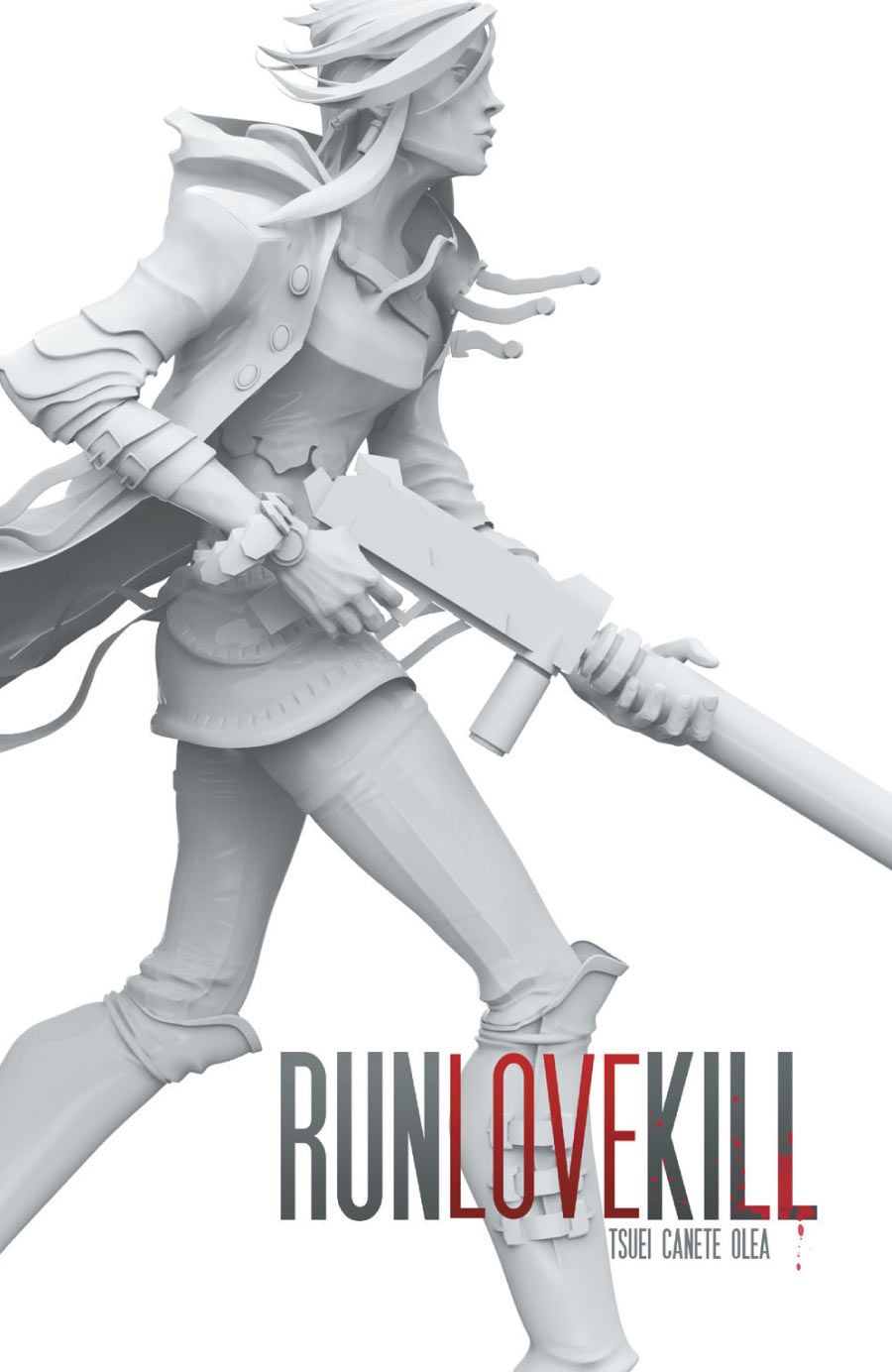"RunLoveKill" #1 is electric, kinetic and captivating in its first ten pages -- but things get significantly less compelling from there. Jon Tsuei and Eric Canete open with a heart-pounding escape sequence before segueing into a more generic tale of big-city dystopia, and there's a world of difference between the two sections. Their protagonist, Rain Oshiro, struggles to escape the walled city of Prygat, and there's nothing to her prison or her person that doesn't feel rather familiar. There's a lot of creative skill here but not a particularly creative world, so "RunLoveKill" #1 leaves me unsure about what the remaining seven issues will bring.
This issue is off to a seriously fabulous start. Ten wordless pages intercut one woman's attempted escape from Prygat with another woman's cello concert, and what could be a hackneyed juxtaposition instead feels fraught and muscular. Colorist Leonardo Olea is particularly effective. He contrasts the blue world of the celloist with the red world of the escapee, before tying the two together on the final page. It's a beautiful use of coloring to tell the story. The framing and atmosphere also help tie the two together. Canete focuses on the celloist's face and fingers, so that her concentration and strain mirror the escapee's. Olea also imbues the cello concert with a fuzzy blue glow that often becomes a sharp, painful glare, suggesting underlying tension. Altogether, this is a gorgeous sequence.
However, there are trade-offs to every structural choice and, while this one creates immediate immersion, it leaves the creative team less time to establish Rain's storyline. Perhaps as a result, the second part of the issue only establishes the most basic tropes and roles for this world and its characters. The reader meets Rain, the smuggler she's struck a deal with, her (potential) love interest Deyliad, and -- of course -- the city where she lives. Unfortunately, none of them rise above their tropes. When Rain and Prygat are all that the reader gets to see, one of them needs to offer a clear hook, and neither grabbed me.
Still, that's not to say the story is bad. Tsuei packages everything efficiently, sending Rain on a sprint through the city that gets everyone introduced while establishing the central problem. Canete and Olea use inking and coloring to imitate camera shots, with really interesting haloing and focusing effects on many of the panels. Canete's ropy art is always engaging, though he draws all the women with the same body type, and Olea shines throughout. He does standout work creating gorgeous panels.
Manu Fernandez's eye-catching, unexpected cover also deserves mention. While it arguably doesn't create accurate expectations for the interior art, it'll definitely get people to pick this book off the shelves and take a look.
With clear skill from the creative team but an average main story, "RunLoveKill" #1 is a question mark of a first issue. Given that the team left themselves fewer pages for world building, perhaps Rain's world and companions will become better developed in issue #2 but, for now, I'm not sure that I want to explore this world further.

